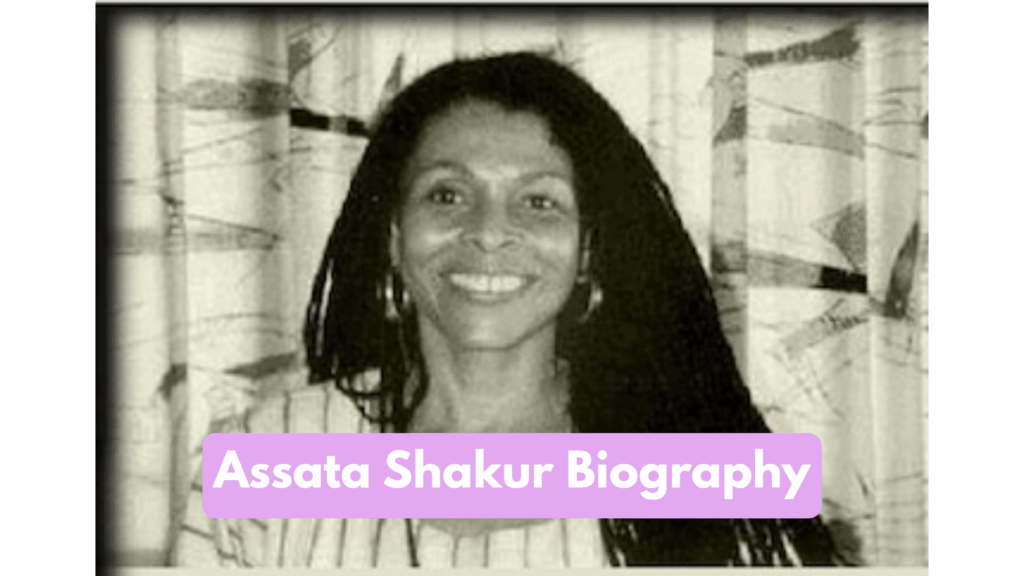Assata Shakur Biography: Death, Activism, Net Worth, Age, Wikipedia, Husband, Children

Assata Shakur (born JoAnne Deborah Byron; later known as Joanne Chesimard) was a Black Panther Party and Black Liberation Army activist who became a highly polarizing figure in American history.
Convicted in 1977 for her role in the killing of a New Jersey state trooper, she escaped American custody in 1979 and lived in political exile in Cuba for decades.
Her life story — from childhood to radical activism, trial, escape, and exile — remains a flashpoint in debates about justice, race, and state power.
Early life and identity
JoAnne Deborah Byron was born in Queens, New York and spent parts of her youth in the South. Early economic hardship and exposure to racial inequality shaped her political views.
In the late 1960s she adopted the name Assata Olugbala Shakur, reflecting an embrace of African identity and revolutionary politics.
Radicalization and activism
Shakur became active in community organizing, briefly joined the Black Panther Party, and later became linked to the Black Liberation Army. While supporters emphasize her community work and defense against police brutality, prosecutors alleged involvement in armed actions. The divide between these perspectives is central to her legacy.
Turnpike shootout, trial, and conviction
On May 2, 1973 a traffic stop on the New Jersey Turnpike ended in gunfire: state trooper Werner Foerster and activist Zayd Shakur were killed; Assata Shakur was wounded. After retrials and appeals, she was convicted in 1977 on charges including first-degree murder. She consistently denied firing the fatal shot and her supporters argued the trial was tainted by racial bias.
Prison, escape, and exile
Shakur served time in state custody until her 1979 escape. She later surfaced in Cuba and was granted political asylum there, a decision that prevented U.S. extradition and turned her case into an international matter. U.S. authorities continued to seek her return for decades.
FBI Most Wanted designation
In 2013 the FBI added Joanne Chesimard (Assata Shakur) to its Most Wanted Terrorists list — the first woman named to the list — and increased rewards for information leading to her capture. The move intensified debate over criminal justice, political dissent, and the legacy of 1960s–70s radical movements.
Writings, culture, and personal ties
While in exile, Shakur published Assata: An Autobiography (1987), a work influential among activist communities. She was also publicly known as the godmother of rapper Tupac Shakur, a connection that amplified her visibility in popular culture.
Death and ending chapter (2025)
In late September 2025 Cuban authorities and multiple news organizations reported that Assata Shakur died in Havana at age 78. Reactions were mixed: some marked closure to a controversial legal saga; others celebrated or memorialized her as an icon of resistance. :contentReference[oaicite:22]{index=22}
Frequently Asked Questions
Who was Assata Shakur?
A Black activist, born JoAnne Deborah Byron (Joanne Chesimard), associated with the Black Panthers and Black Liberation Army; convicted in 1977 and later exiled to Cuba.
Was she convicted?
Yes. In 1977 she was convicted on multiple charges, including first-degree murder related to the 1973 Turnpike incident.
Did she escape prison?
Yes. She escaped in 1979 and later lived in Cuba under political asylum.
Why is she on the FBI list?
The FBI added her to its Most Wanted Terrorists list in 2013, citing her conviction and subsequent flight; the designation was controversial.
Is she dead?
Cuban authorities and news outlets reported her death in Havana in September 2025.
Conclusion
Assata Shakur’s life story complicates simple narratives of crime, activism, and justice. Her biography forces a confrontation with how political dissent is policed, how narratives of resistance are formed, and how history remembers controversial actors. Whether remembered as a hero, criminal, or a contested mixture of both, Assata Shakur’s life will continue to be studied and debated.


